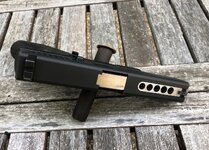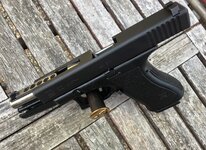Silver Lifetime
- Messages
- 42,857
- Reactions
- 111,328
I was messing around online and wound up looking at .45 ACP v .45 Super and decided to go out in the yard and get some real world velocity number from five different .45 ACP handguns:
Remington 230gr MC/FMJ ammo L45AP4
S&W 325 Thunder Ranch 4" barrel - 766 fps
Glock 21 with Scheumann hybrid comp 4.6" barrel - 665 fps
SIG 227 Carry 3.9" barrel - 703 fps
SIG 227 Nitron 4.4" barrel - 740 fps
SIG 227 Tactical 4.9" barrel - 784 fps
Conclusions:
1) The revolver surprised me; It did better than all the others except the Tactical 227
2) That Remington MC ammo is weak.
Maybe another day I will repeat the test with better ammo.
Remington 230gr MC/FMJ ammo L45AP4
S&W 325 Thunder Ranch 4" barrel - 766 fps
Glock 21 with Scheumann hybrid comp 4.6" barrel - 665 fps
SIG 227 Carry 3.9" barrel - 703 fps
SIG 227 Nitron 4.4" barrel - 740 fps
SIG 227 Tactical 4.9" barrel - 784 fps
Conclusions:
1) The revolver surprised me; It did better than all the others except the Tactical 227
2) That Remington MC ammo is weak.
Maybe another day I will repeat the test with better ammo.
Last Edited:













